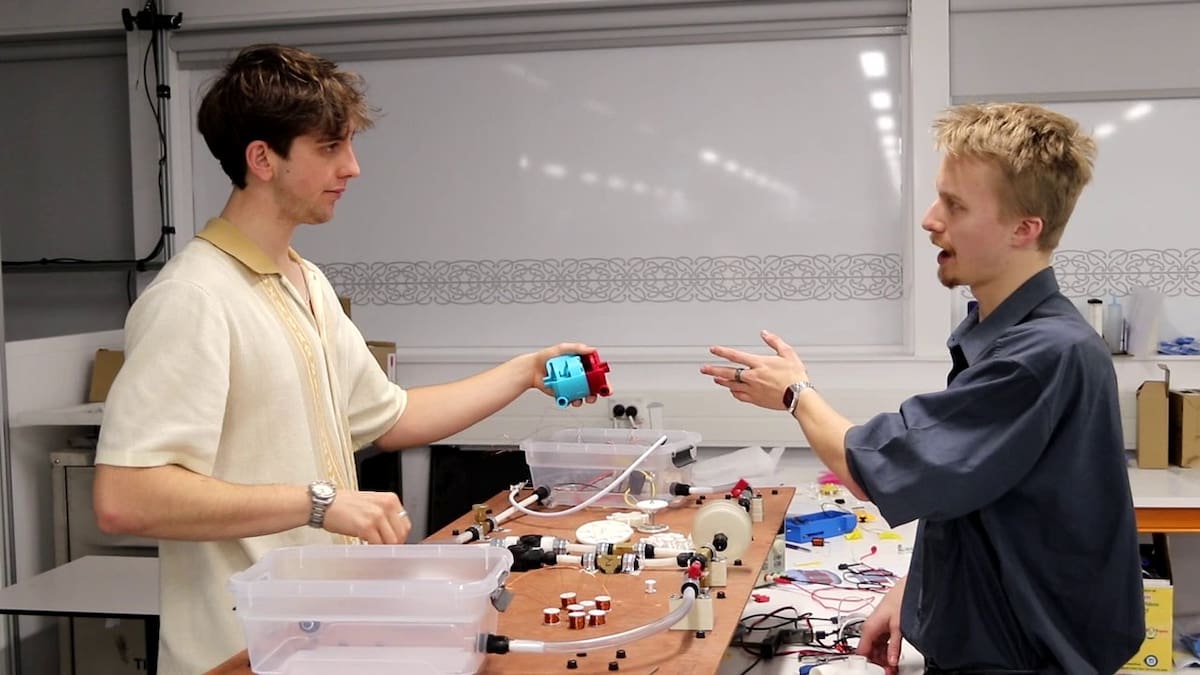An artificial heart acts as a mechanical pump that’s implanted in the chest to replace the heart’s lower chambers when they fail, effectively taking over the pumping function to circulate blood throughout the body.
This year, the team is introducing a novel motor system and cutting-edge magnetic and haemodynamic technologies to better replicate the natural pumping action of a healthy heart.
Team member Luke Cousins says, “The team has focused on creating a compact design without compromising functionality, a challenge that has proven difficult across the field. Now, we’re introducing a new motor that allows us to hit those flow targets while keeping the device small enough to fit inside the human body.
“The feedback we’re getting [from industry leaders] is that this has great potential.”
Potential impact of an artificial heart
A clinically viable artificial heart offers a life-saving alternative when donor organs aren’t available and could replace the need for donor hearts in future.
Currently, artificial hearts are used as a temporary “bridge” to keep patients alive while they wait for a transplant.
“Our project is working towards a technological solution that could save many lives,” James says.
A team of University of Canterbury mechanical and biomedical engineering students will represent New Zealand on the world stage at the prestigious Heart Hackathon competition in Vienna in December. Photo / Supplied
As one of 13 teams, the students will take their artificial heart to the Hackathon where they will showcase its design and effectiveness and will answer questions from experts and other competing teams.
During the Hackathon, they’ll have the opportunity to learn from leading industry leaders and receive feedback.
The students believe their innovation could be a game-changer, not just as a temporary bridge to transplant, but as a long-term solution for heart patients.
“Demand for donor hearts far outweighs supply. That’s where artificial hearts come in,” team lead Bramwell Clarkson says.
“While the heart’s function is primarily mechanical, replicating it artificially remains a significant challenge due to the need for precise synchronisation, durability, and biocompatibility.
“The end goal is to try and meet those demands by creating a total artificial heart to improve access to heart transplants.”
Heart Foundation medical director Dr Gerry Devlin says a successful prototype could inform future artificial heart development, influencing clinical research and ultimately clinical care.

